Why I’m Growing Tomato Plants In My Yard
I just came in from planting 35 little tomato plants in the garden. I love being able to grow my own tomatoes each year. We started growing tomato plants a few weeks ago from seed and they finally grew big enough to be planted outside. And now the hard part starts… waiting for them to keep growing up and eventually growing delicious tomatoes. I’m usually ready for them to produce about 30 minutes after I am done planting them outside 🙂
While that’s not going to happen, I thought I’d be patient and instead it down and share a little about why we grow our own tomatoes, what we grow, how we take care of our plants, and of course what we use them for once the harvesting begins.
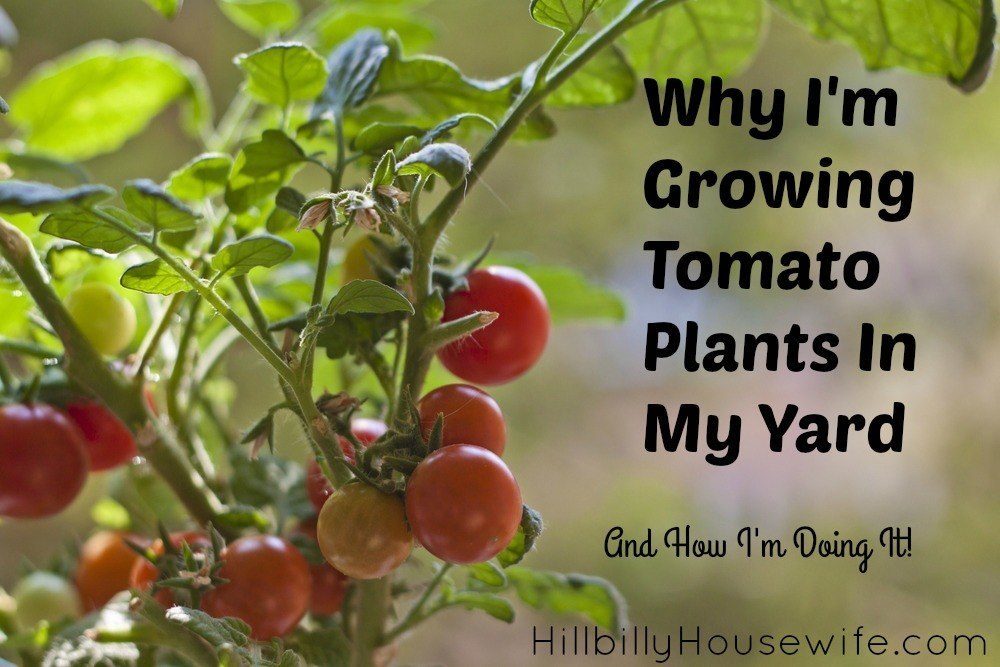
If you’re not already growing tomatoes, I hope this inspires you to give it a try. There’s just nothing that compares to the flavor of a ripe tomato fresh from the garden and still warm from the sun.
Why I’m Growing My Own Tomatoes
You know I am frugal at heart and from a purely economical standpoint, growing your own produce, particularly something as inexpensive as tomatoes doesn’t really make sense. You can find tomatoes on sale at the store when they are in season for less than you can grow them.
This is especially true if you don’t have soil, compost, tools and your own seeds to work with. Heading to the garden center to get potting soil, pots and a few little tomato plants can easily set you back $50. And you haven’t even started accounting for water or the time you are investing in growing your own.
That being said, for me it is well worth it to grow my own tomatoes for a variety of reasons. First and foremost, it’s a lot of fun. It’s an easy and relatively inexpensive way for me to relax, play in the dirt, get some fresh air and sunshine and a little exercise.
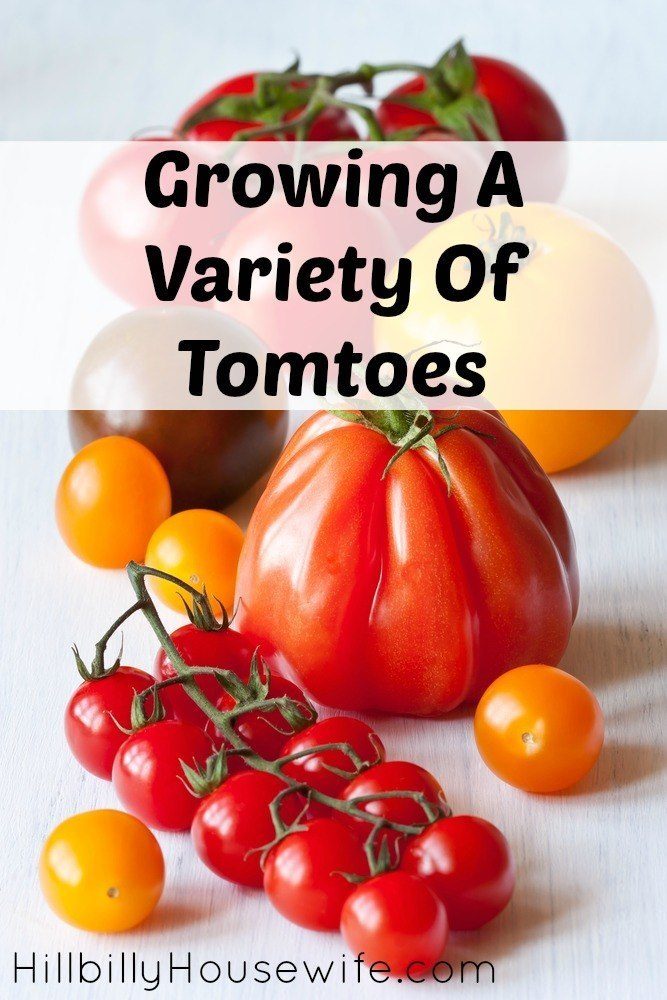 Tomato Varieties Including Heirloom Tomatoes
Tomato Varieties Including Heirloom Tomatoes
There is an almost endless variety of different types of tomatoes available today. Before you start your tomato garden, you have a couple of important decisions to make. You need to have an idea of how much room you have. We’ll go into this in a little more detail in the section about planting tomatoes, but if all you have to work with is a couple of containers for your patio or balcony, you probably want to choose a smaller tomato variety like a cocktail tomato. If you have plenty of room to plant them in your garden, you may want a variety of different tomatoes.
Some varieties like beef steak and better boy tomato for example are great sliced and added to sandwiches, or chopped in salads. Roma tomatoes are my personal favorite for making sauce. Cocktail tomatoes will grow and ripen quicker and make for good eating. I love them in salads and also like them for making homemade salsa.
All of the varieties I’ve mentioned so far are usually available as little plants in your local garden center. Most of the common varieties sold at the stores are hybrid tomatoes that are fairly resistant to disease, making it easy to grow them at home.
Heirloom tomatoes are another option. Unless you have a garden center that specializes in these types of plants, chances are that you will have to grow them from seed. It’s not that hard, but it takes some extra time. These plants may also take a little extra care since they haven’t been bread to be easy to grow and disease resistant. In return you’ll be rewarded with amazing flavor.
If this is your first year growing tomatoes, start with a few plants from your local garden center. Even with the most common varieties of hybrid tomatoes, you end up with a lot more flavor than anything you can find at the grocery store. Once you get your feet wet as a tomato grower and gain a little experience, you can start to branch out into heirloom varieties.
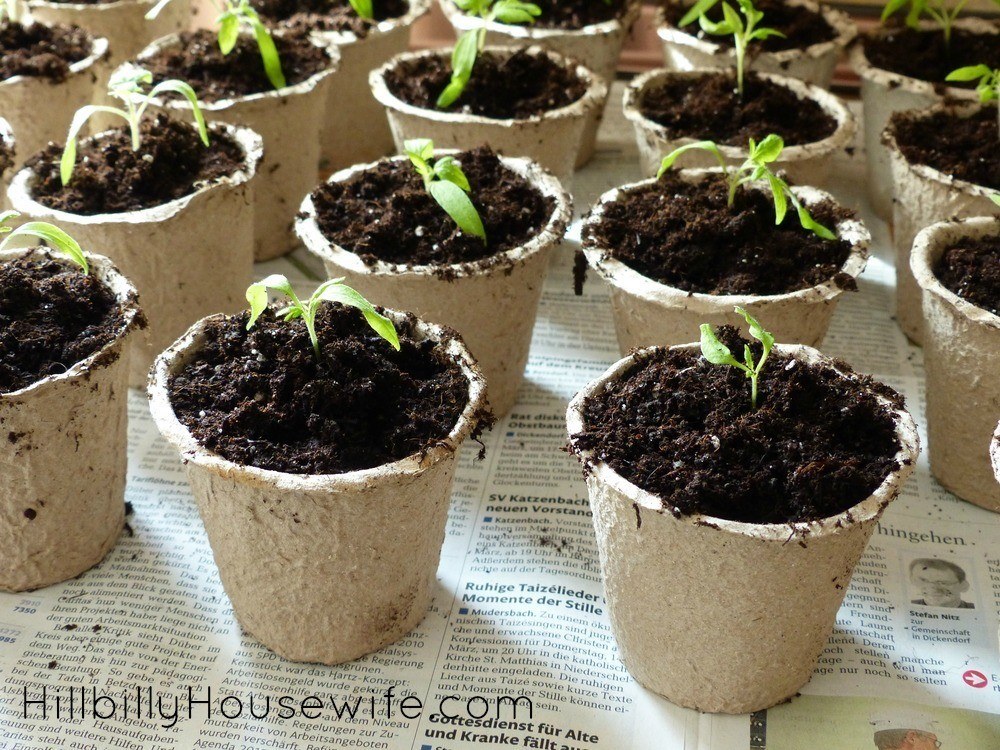
Growing Tomato Plants From Seed
You have two options when it comes to growing tomatoes. You can grow your own plants from seed, or you can go buy little plants at your local nursery, hardware store, or farmers market. Start by buying tomato plants. It’s easier and takes less time. This is also your best option if you’re already well into spring or your local growing season.
Growing your tomato plants from seeds on the other hand, while being more work, has a couple of distinct advantages. You’re not reliant on the varieties and quantities of plants available to you locally. You can find all sorts of different heirloom tomato varieties, order the seeds and plant away. Seeds also happen to be much cheaper than partially grown plants.
It will take about six to eight weeks to grow tomato plants from seed that can be transplanted in your garden. I recommend you start them indoors about four weeks before your usual last frost. That gives you a couple of weeks of buffer space if the cold weather hangs around a little longer than usual. For us that means we’re starting out tomato seeds at the beginning of march. By early to mid April, they are ready to be transplanted in the garden.
Start with fresh seeds from a reliable source. Plant the seeds in small cups in a good starter soil mixture (about 1/8 of an inch deep) and gently moisten the soil. Keep the soil moist but not wet and at a temperature between 70 and 80 degrees. Since that’s a little warmer than we’re keeping the house, we usually stick the tomato plant cups in a large cooler with a bottle of hot water in there. It keeps them at ideal temperatures for 12 hours at a time.
You will start to see little sprouts pop up within a week or so. Move the plants to a bright light source for a big part of the day. This can be a sunny window, or a bright light. With plenty of light and a little watering each day, your tomatoes will grow quickly.
If you’re starting them in very small cups (I use dixi cups or egg shell halves), transplant them into larger containers once the tomato plants grow their first set of regular (bigger) leaves.
A week or two before you plan to plant your tomatoes, it’s time to get them used to the outdoors. This is refered to as “hardening”. Take your containers and set them outside, so the little tomato plants can get used to the wind, full sunlight and the likes.
Where To Plant Tomatoes In The Garden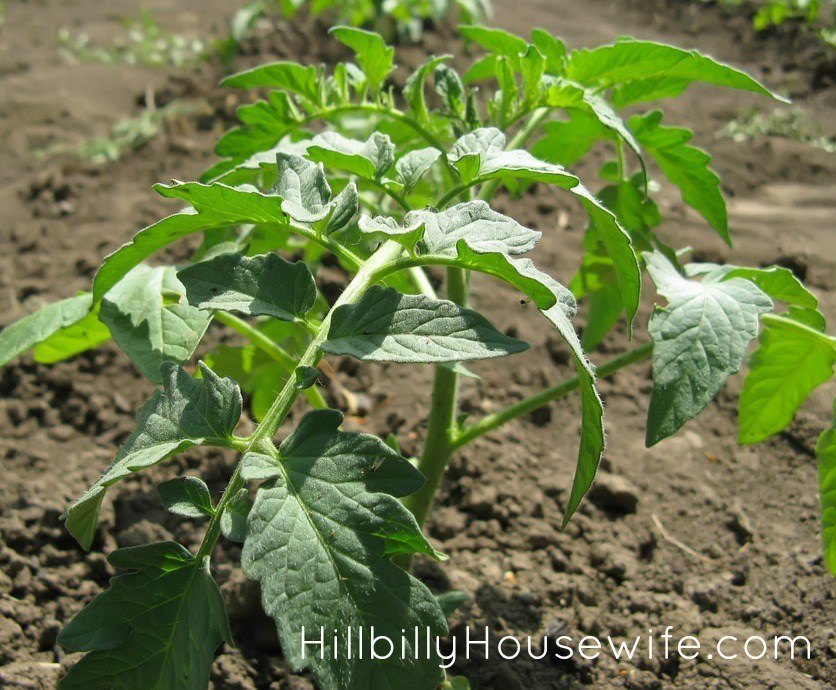
Once your tomato plantings have grown enough to be replanted outside, it’s time to decide where you want to plant them in the garden. Of course it helps to give this some thought before you start to grow them from seed. This way you know how many viable plants you need.
Next think about where you want to plant them. If you don’t have a lot of space in your yard, don’t want to dig up the soil, or are working with only a patio or balcony, you can grow your tomatoes in containers. That’s how we started out our first year.
Find a large container and fill it with good soil. We used a mixture of soil we dug up at the edge of our yard, potting soil, and compost. Then plant your seedlings in your containers and keep them watered. Watch them grow and provide you with a nice little tomato harvest. You’ll be pleasantly surprised how many delicious, home-grown tomatoes you can get from just one or two potted tomato plants. As a bonus they make a nice addition to your patio or balcony.
If you’re wanting a larger tomato harvest (and hopefully enough to can or freeze to use throughout the year), planting the tomatoes in the garden is a good idea. Pick a spot where they’ll get plenty of sun. It’s also helpful to have a water source close by. If you can reach your vegetable garden with the watering hose, it will make your life much easier. Hauling watering can after watering can each day through the backyard makes for great exercise, but it takes some of the fun out of gardening.
If you live in a hot climate, don’t pick a spot in direct sunlight, particularly during the middle of the day. While tomatoes love the sun, too much heat can hurt your plants. Finding the perfect spot may take a little trial and error. We planted a few tomatoes in three different spots in our yard our second year and watched how the plants where thriving. From there we picked our perfect growing spot and have stuck with it ever since.
Next it’s time to get the ground ready for planting. Till it up, incorporate some compost into the soil and you’re good to go. Plant your tomato seedlings when you’re sure there will be no more frost, water them well to get them going and take it from there. They won’t take long to grow up and it’s time to stake them down. Give them plenty of space to grow. Plant your tomato plants least 40 inches apart from each other. This gives their roots and leaves room to grow and they will hopefully reward you with a plentiful harvest.
Here are a few more tips on growing tomatoes. There’s also some info in this video that will come in handy if you live in a cooler climate than me here in sunny South Carolina.
Tomato Plant Care Tips
Once you have the little tomato plantings planted, water the soil they are in really well so the roots can do their thing and start growing. Tomatoes like to be well watered, but they don’t like a lot of water on the green part of the plant itself.
You also want to do your best to not get soil on the leaves of the plant. Soil can harbor bacteria that can cause all sorts of diseases in your tomato plants. Start by watering gently and watering the soil, not the plant. Pour the water slowly so the dirt and sand doesn’t splash up on the leaves. As the plants start to grow taller, and there’s a risk of leaves drooping down to the soil, get pieces of cardboard tubing (from a paper towel roll or toilet paper roll), cut it to size and cut it lengthwise so you can slip the cardboard cuff around the stem of your tomato plants.
If you run into any issues with your tomato plants, Clemson University Extension has some great advice here.
Start staking your tomato plants early and keep them well staked. We had one tomato plant full of growing tomatoes break on us on a windy day last year and it was heartbreaking.
As far as watering goes, I find that watering them really well every few days tends to work better than more frequent light watering.
Pinch off any suckers or ruts that come up. You can stick them in water and get them to root so you end up with even more tomato plants.
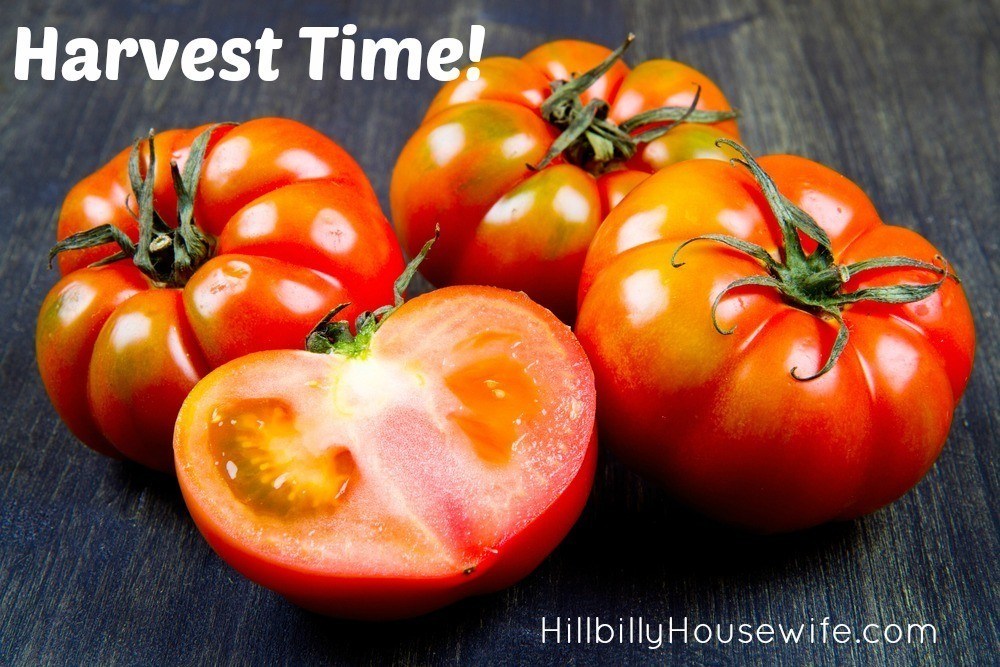
Harvesting Ripe Tomatoes
When you pick your tomatoes is entirely up to you. If you’re going to eat fresh red (or yellow, or orange, or purple … depending on the variety you’ve grown) tomatoes, leave them on the vine as long as possible. Harvest them when they are completely ripe and you’re read to slice them up in a salad or make a sandwich with. They’ll have the best flavor that way.
I’ve also been known to pick some of our first tomatoes early to make fried green tomatoes. That’s always a tasty option when you just can’t possibly wait any longer to taste your harvest. This is also a great way to use up the occasional green tomato that falls off the plant.
If that happens and friend green tomatoes aren’t your thing (what’s wrong with you? 😉 ), you can also place the tomatoes in a brown paper back and let them finish ripening on the counter.
I recommend you don’t refrigerate tomatoes. They lose a lot of flavor in the fridge. Either use them right away, can them, or freeze them for later use.
If you’re new to gardening or want to learn more about growing sweet and juicy tomatoes, take a look at How To Grow Juicy Tasty Tomatoes by Lucia and Annette. I’ve learned a lot about pruning and in particular different tomato diseases.
I was planning on sharing some tips with you on storing and putting up tomatoes along with a few of my favorite tomato recipes, but I’m sure you agree that this post is already getting pretty long. We’ll save that for Part 2 – Preserving And Cooking With Homegrown Tomatoes.
To support the blog, check out the HBHW eBooks available on Amazon. Thank you!
Disclosure: Some of the links below are affilate links, meaning, at no additional cost to you, I will earn a commission if you click through and make a purchase.

